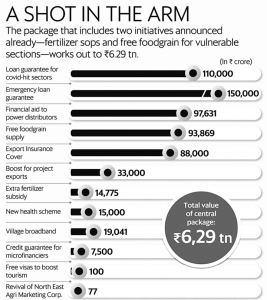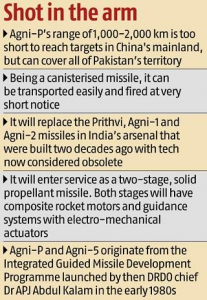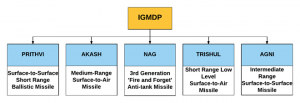Topics
- Economic relief Package | Covid 19
- Attorney General of India
- Drone Strikes
- Missiles | Agni
- Statistics Day
- Wildlife Sanctuary | Assam
- Economic relief Package | Covid 19
#GS3 #Growth and Development #Food Security #Government policies
Context: Recently, the Ministry of Finance rolls out second wave stimulus, expands credit relief for health, tourism.
- The liquidity portion of the package, especially for small businesses, could indirectly revive the fortunes of larger industries they source from and help repair broken supply chains.
- The package also includes risk cover for merchandise and project exports, funds for healthcare, rural digital connectivity and power utilities, and support for businesses to hire new workers.
- A total of 17 measures amounting to Rs. 6, 28,993 crore were announced in the Economic Relief Package.
- However it will increase the Fiscal Deficit by 0.6% as per a report of State Bank of India.
Highlights:
- Loan Guarantee Scheme:
- According to the package, loan guarantees worth ?1 trillion will be offered to covid-affected sectors, including ?50,000 crore to hospitals for expansion and building new facilities in non-metro cities.
- One sector that would be covered in the remaining ?60,000 crore loan guarantee window is tourism.
- The health sector component is aimed at scaling medical infrastructure targeting underserved areas (i.e. non-metropolitan areas).
- Emergency Credit Line Guarantee Scheme:
- The scope of an emergency credit line guarantee scheme offering relief to many businesses last year has now been expanded from ?3 trillion to ?5 trillion.
- Of this, ?69 trillion has already been granted to over 11 million units.
- Loans will also be given to 2.5 million small borrowers under a new credit guarantee scheme through micro financiers.
- Under this scheme, the National Credit Guarantee Trustee Company (NCGTC) will back banks’ loans to microlenders for on-lending up to ?25 lakh per borrower.
- Extension of Aatmanirbhar Bharat Rozgar Yojana (ANBRY):
- ANBRY incentivises employers for creation of new employment, restoration of loss of employment through Employees’ Provident Fund Organisation (EPFO).
- The Atmanirbhar Bharat Rozgar Yojana, which funded full or partial PF contribution of employees hired under the scheme, depending on the size of the employer, was to expire in June.
- This has been extended till the end of March next year. Once signed up, government funds the PF of such workers for two years.
- Pradhan Mantri Garib Kalyan Ann Yojana:
- Five kg of food grains will be provided free of cost to National Food Security Act beneficiaries from May to November 2021.
- Strengthening Public Health:
- New Scheme for Children and Paediatric Care:
- A new scheme for strengthening public health infrastructure and human resources with outlay of Rs. 23,220 crore was also announced.
- This will focus on short-term emergency preparedness with special emphasis on children and paediatric care.
- Tourism:
- Free one month tourist visa to 5 lakh tourists.
- It also announced financial support to more than 11,000 registered tourist guides and other stakeholders in the sector.
- Under this, fully guaranteed loans up to ?10 lakh will be granted per tourist agency and up to ?1 lakh per tourist guide for discharging their liabilities and restarting the business.
- Revival of North Eastern Regional Agricultural Marketing Corporation:
- A revival package of Rs 77.45 crore will be provided to North Eastern Regional Agricultural Marketing Corporation (NERAMAC).
- NERAMAC has facilitated registration of 13 Geographical Indicator (GI) crops of North-East.
- It has prepared a plan to give 10-15% higher price to farmers by-passing middlemen/agents.
- It also proposes to set up North-Eastern Centre for Organic Cultivation, facilitating equity finance to entrepreneurs.
- Boost for Exports:
- It has been decided to provide an additional corpus to the National Export Insurance Account (NEIA) over 5 years. This will enable it to underwrite additional Rs. 33,000 crore of project exports.
- NEIA Trust promotes Medium and Long Term (MLT) project exports by extending risk covers.
- It provides cover to buyer’s credit, given by EXIM (Export-Import) Bank, to less credit-worthy borrowers and supporting project exporters.
- Digital India:
- Additional Rs. 19,041 crore will be provided to implement Bharat Net in PPP model in 16 States on viability gap funding basis.
- This will enable expansion and upgradation of Bharat Net to cover all Gram Panchayats and inhabited villages.
- Reform-Based Result-Linked Power Distribution Scheme:
- Revamped Reforms-Based, Result-Linked power distribution scheme of financial assistance to DISCOMS for infrastructure creation, up-gradation of system, capacity building and process improvement was announced in the Union Budget of 2021-22.
- It aims at state specific intervention and to provide assistance for installation of 25 crore smart meters, 10,000 feeders, 4 lakh km of LT overhead lines.
- The amount available under the scheme is in addition to the allowed additional borrowing of 0.5% of Gross Domestic Product of State which will be available to the States annually for the next four years subject to carrying out specific power sector reforms.
- Ongoing works of Integrated Power Development Scheme (IPDS), Deendayal Upadhyaya Gram Jyoti Yojana (DDUGJY) and SAUBHAGYA will also be merged in the scheme.
Significance of the Economic relief package:
- It would bring in much-needed liquidity and help revive the employment-intensive sectors such as tourism.
- It will help save livelihoods and mitigate further closures and also create new job opportunities.
- It will bolster efforts for any such healthcare challenges in the future.

- Attorney General of India
#GS2 #Indian Constitution #Union Executive
Context: The union government has extended the term of K.K. Venugopal as Attorney General (AG) for a period of one more year with effect from July 1.
About:
- This is the second time the Centre has extended his tenure. Venugopal received his first extension of term in 2020.
- K K Venugopal took over as the 15th Attorney General for India on July 1, 2017, succeeding senior advocate Mukul Rohatgi who was AG from 2014-2017.
- Venugopal is representing the central government in several key cases including the constitutional challenge to dilution of Article 370, the central government’s management of the Covid-19 pandemic, the case challenging Section 124-A of the penal code that criminalises sedition among others. He has successfully defended the government in the Rafale case in 2018 and in the constitutional challenge to Aadhaar among others.
About Attorney General:
- The Attorney General (AG) of India forms a part of the Union Executive.
- AG is the highest law officer in the country
- As a chief legal advisor to the government of India, he advises the union government on all legal matters.
- Article 76 of the Indian Constitution provides for the office of AG of India.
Who appoints Attorney General of India?
- President of India appoints a person who is qualified for the post of Supreme Court Judge.
- Attorney General is appointed by the President on the advice of the government.
- There are the following qualifications:
- He should be an Indian Citizen
- He must have either completed 5 years in High Court of any Indian state as a judge or 10 years in High Court as an advocate
- He may be an eminent jurist too, in the opinion of the President
- Term of the Office is not fixed/mentioned by the Constitution.
Removal:
- The Constitution does not mention the procedure and ground of his removal.
- He can be removed by the President at any time
- He can quit by submitting his resignation only to the President
- Since he is appointed by the President on the advice of the Council of Ministers, conventionally he is removed when the council is dissolved or replaced.
Duties and Functions:
- To give advice to the Government of India (GoI) upon such legal matters, which are referred to her/him by the President.
- To perform such other duties of a legal character that are assigned to her/him by the President.
- To appear on behalf of the GoI in all cases in the Supreme Court or in any case in any High Court in which the GoI is concerned.
- To represent the GoI in any reference made by the President to the Supreme Court under Article 143 (Power of the President to consult the Supreme Court) of the Constitution.
- To discharge the functions conferred on her/him by the Constitution or any other law.
What are the limitations on the Attorney General?
- To avoid conflict of duty, there are a few limitations that are posted on the Attorney General which he should keep in mind while performing his duties:
- He should not advise or hold a brief against the Government of India
- He should not advise or hold a brief in cases in which he is called upon to advise or appear for the Government of India
- He should not defend accused persons in criminal prosecutions without the permission of the Government of India
- He should not accept appointment as a director in any company or corporation without the permission of the Government of India.
Other Facts about AG:
- The Attorney General has the right to speak and to take part in the proceedings of both the Houses of Parliament or their joint sitting and any committee of the Parliament of which s/he may be named a member but without a right to vote.
- Similar to Member of Parliament, he also enjoys all powers related to immunities and privileges
- He is not considered as a government servant.
- He can practise privately too as he is not debarred from private legal practice.
- Solicitor General of India and Additional Solicitor General of India assist the AG in fulfilment of the official responsibilities.
- Corresponding Office in the States: Advocate General (Article 165).
- Drone Strikes:
#GS3 #Internall Security #Technology
Context: Recently, Drones were used for the first time to drop explosive devices, triggering blasts inside the Air Force Station’s technical area in Jammu.
Drone Attacks and Concerns:
- The drone strike at Indian Air Force (IAF) Jammu base followed by two drone sightings at Ratnuchak and Kaluchak military stations are clear indicators that terrorists have upped the game and are using technology to remain one step ahead of the security forces.
- The use of drones by terrorists to target IAF Jammu base marks a paradigm shift in the nature of the threat and counter measures.
- Not only are vital assets and vital points vulnerable but so are military convoys.
- Over the past two years, drones have been deployed regularly by Pakistan-based outfits to smuggle arms, ammunition and drugs into Indian territory.
- Drones fly low and therefore cannot be detected by any radar system.
- In 2019, security personnel reported 167 sighting of drones from Pakistan, according to the official figures. In the pandemic hit 2020, there were 77 sightings.
- With the rapid proliferation of drone technology and exponential growth of its global market in recent years, the possibility of a drone attack cannot be ruled out even in the safest cities in the world.
- Drones are becoming security threats particularly in conflict zones where non-state actors are active and have easy access to the technology.
- Earlier in 2013, Al-Qaeda attempted a terror attack using multiple drones in Pakistan without success. From 2016 on, the Islamic State made drone attacks a regular feature in its operations in Iraq and Syria.
- In the military domain, small drones have been proliferating at a rate that has alarmed battlefield commanders and planners alike.
- In certain incidents, the small drones were also armed with explosive ordnance, to convert them into potentially lethal guided missiles, thus demonstrating the growing sophistication with which these potent warriors have found relevance in combat zones.
What is the use of drones?
- Drones are essentially a military tool as they eliminate the risk on a pilot’s life in combat zones, and since they are unmanned, they don’t require fatigue-induced rest, making them fly till fuel lasts or until some mechanical problems crop up.
- Drones are now used for various purposes from delivery of merchandise, taking photographs or shooting videos to military warfare and space exploration.
- The US military made the first big demonstration of the military use of drones in the 1991 Gulf War. It deployed UAVs to target its enemy forces.
- In space, the US Air Force’s mysterious X-37B space plane, which has made at least six clandestine forays into space, is perhaps the most-talked-about drone.
Reason for Increasing Drone Attacks:
- They are relatively cheaper compared to other conventional weapons
- They can be controlled from remote distance.
- They are easier to procure and operate.
Why preventing drone terror attack is difficult?
- The surveillance technology including radar systems that India has deployed at the borders or lines of control is meant for tracking bigger objects, helicopters, planes and missiles
- Drones are smaller in size as small as 2 feet or only 60 cm than previously popular UAVs but can fly for several kilometres at a speed ranging from 125 kmph to over 950 kmph, according to the AUSA report.
- Preventing drone attacks requires jamming of drone systems and shooting them down.
- Laser-based Directed Energy Weapons (DEWs) are being talked about as a defence system against drone attacks.
- In India, the Defence Research and Development Organisation (DRDO) has developed two anti-drone DEW systems.
- They can use powerful 10-kilowatt laser to engage aerial targets at a distance of 2 km. However, mass production of these systems is yet to take place.
Rules for Drone Regulations in India:
- Unmanned Aircraft System (UAS) Rules, 2020:
- It is a set of rules notified by the government that aims to regulate the production, import, trade, ownership, establishment of the drone ports (airports for drones) and operation of UAS.
- It also seeks to create a framework for drones use by businesses.
- National Counter Rogue Drones Guidelines 2019:
- The guidelines had suggested a number of measures to counter rogue drones depending on the vitality of assets being protected.
- For places of critical national importance, the rules called for deployment of a model that consists of primary and passive detection means like radar, Radio Frequency (RF) detectors, electro-optical and infrared cameras.
- In addition to this, soft kill and hard kill measures like RF jammers, Global Positioning System (GPS) spoofers, lasers, and drone catching nets were also suggested to be installed.
Way Forward
- Regulation on use of drones in India should be effectively implemented to foster technology and innovation in the development of drones and improve the ease of doing business, by sidelining unnecessary requirements and creating a single-window process.
- The government should ensure protection of privacy of citizens by limiting the use of drones for surveillance.
- It is important to use drones responsibly to minimize negative impacts on wildlife, including birds.
- Possibilities of drone-related accidents should be minimized by strict enforcement of regulations.
- Missiles | Agni
#GS3 # Defence technology #Indigenisation of technology
Context: Recently, a new generation nuclear capable ballistic missile Agni-P (Prime) was successfully test-fired by the Defence Research and Development Organisation (DRDO) from Dr. APJ Abdul Kalam island off the coast of Odisha, Balasore.
About Agni-P Missiles:
- Agni-P is a new generation advanced variant of the Agni class (under IGMDP – Integrated Guided Missile Development Program).
- Its range capability is between 1,000 and 2,000 km.
- The missile is fully made up of composite material.
- Composites are lightweight, have better strength and offer more design and production flexibility over conventional materials.
- The test was conducted from the A.P.J. Abdul Kalam Island, Balasore, off the coast of Odisha.
- Agni Prime comes in a canisterised configuration.
- Canisterisation / Canister based launch system:
- In this configuration, a missile mated with a nuclear warhead is sealed in a canister, which is placed atop a road-mobile launcher.
- Canisterisation significantly enhances the mobility of a missile.
- In canisterised configuration, a missile requires very short preparation time and can be launched at short notice.
- Canisterisation also increases the reliability of a missile and its shelf-life.
- A canisterised missile can be fired directly from the canister or cylindrical container containing the missile by elevating it.
- Agni-P missile would further strengthen India’s credible deterrence capabilities.
- In the past few years, India has also operationalised its submarine-based nuclear launch capability, completing the nuclear triad.
- This is especially important given India’s no-first-use policy while reserving the right of massive retaliation if struck with nuclear weapons first.
- A nuclear triad is a three-pronged military force structure that consists of land-launched nuclear missiles, nuclear-missile-armed submarines, and strategic aircraft with nuclear bombs and missiles.
- In 2020, the DRDO successfully test-fired a 3,500-km range submarine-launched ballistic missile, K-4.
- Once inducted, these missiles will be the mainstay of the Arihant class of indigenous ballistic missile nuclear submarines (SSBN).
- It will give India the stand-off capability to launch nuclear weapons submerged in Indian waters.
- INS Arihant, the only SSBN in service, is armed with K-15 missiles with a range of 750 km.

Agni class missiles:
- The Agni class of missiles are the mainstay of India’s nuclear launch capability which also includes the Prithvi short-range ballistic missiles, submarine-launched ballistic missiles and fighter aircraft.
- The longest of the Agni series, Agni-V, an Inter-Continental Ballistic Missile (ICBM) with a range of over 5,000 km, has already been tested several times and validated for induction.
- Earlier, India had tested Agni-5 intercontinental ballistic missile in canisterised configuration.
Range of other Agni Missiles:
- Agni I: Range of 700-800 km.
- Agni II: Range more than 2000 km.
- Agni III: Range of more than 2,500 Km
- Agni IV: Range is more than 3,500 km and can fire from a road mobile launcher.
- Agni-V: The longest of the Agni series, an Inter-Continental Ballistic Missile (ICBM) with a range of over 5,000 km.
IGMDP (Integrated Guided Missile Development Program)
- It was conceived by Dr. A.P.J. Abdul Kalam to enable India attain self-sufficiency in the field of missile technology. It was approved by the Government of India in 1983 and completed in March 2012.
- The 5 missiles (P-A-T-N-A) developed under this program are:
- Prithvi: Short range surface to surface ballistic missile.
- Agni: Ballistic missiles with different ranges, i.e. Agni (1,2,3,4,5)
- Trishul: Short range low level surface to air missile.
- Nag: 3rd generation anti-tank missile.
- Akash: Medium range surface to air missile.


- Statistics Day:
#GS3 #Planning #Economic Data
Context: Every year, Statistics Day is celebrated on 29th June, Observed in recognition of the notable contributions made by Late Professor Prasanta Chandra Mahalanobis in the fields of statistics, statistical system and economic planning.
About the Day:
- The theme of Statistics Day, 2021 is Sustainable Development Goal (SDG)– 2 (End Hunger, Achieve Food Security and Improved Nutrition and Promote Sustainable Agriculture).
- Objective of celebrating the day is to popularise the use of statistics in everyday life and sensitise the public as to how statistics help in shaping and framing policies.
- Winners of Prof. P.C. Mahalanobis National Award in Official Statistics, 2021 and Prof C. R. Rao National Award for Young Statistician, 2021 will be announced by the Ministry of Statistics and Programme Implementation.
Prof. Prasanta Chandra Mahalanobis (1893-1972)
- He is referred to as the chief architect of Indian statistical system as well as father of statistical science in India.
- He established the Indian Statistical Institute (ISI) in 1931 in Kolkata. The institute founded the journal Sankhya, along the lines of Karl Pearson’s In 1959 it was made an autonomous body of Ministry of Statistics & Programme Implementation.
- He also helped in the establishment of Central Statistical Organisation (CSO), the National Sample Survey (NSS) and the Annual Survey of Industries (ASI).
- He introduced three key concepts to the theory and practice of sample surveys which are: Pilot surveys, Optimum survey design and Inter Penetrating Network of sub-samples technique (IPNS).
- In 1936 he introduced a statistical measure named the Mahalanobis distance. It is widely used in cluster analysis and classification techniques.
- The Mahalanobis model, was employed in the Second Five Year Plan, which worked towards the rapid industrialisation of India.
- He introduced innovative techniques for conducting large-scale sample surveys, calculated acreages and crop yields, using the method of random sampling.
- He also devised a statistical method called ‘Fractile Graphical Analysis’, used to compare socio-economic conditions of varied groups.
- Wildlife Sanctuary | Assam:
#Wildlife Conservation #GS2 #International Organisation
Context: Recently, the World Wide Fund for Nature-India (WWF) found a few tigers inhabiting the Barnadi Wildlife Sanctuary in Assam.
Key Points
- Bornadi Wildlife Sanctuary is a 26.22-square-kilometre (10.12 sq mi) wildlife sanctuary situated on the foothills of Himalayas bordering Bhutan in the north and in Udalguri district & Baksa District of Assam.
- The Sanctuary is bordered by the Barnadi river and Nalapara river to the west and east respectively.
- This sanctuary is named after the river Bornadi which flows on its western border.
- It was affirmed as the WS in 1980 by the Government of Assam.
- Barnadi was established specifically to protect the Pygmy Hog (Sus salvanius) and Hispid Hare (Caprolagus hispidus).
Pygmy Hog (Sus salvanius)

Hispid Hare (Caprolagus hispidus).

- CITES: Appendix I
- Schedule I of Wildlife Protection Act of 1972
- IUCN Red List: Endangered.
- Habitat: Southern foothills of the central Himalayas.
- Occupies tracts of early successional tall grasslands, locally termed elephant grass.
Biodiversity:
- This is important for threatened species such as the Asian Elephant (Elephas maximus), Tiger (Panthera tigris) and Gaur Bos frontalis.
- About 60% of the BWS is reported to be grassland, most of it is now grassy woodland.
- The main Forest types are Tropical Moist Deciduous along the northern edge of the Sanctuary, and mixed scrub and grassland in the southern part with few trees.
Other Protected Areas in Assam:
- Dibru-Saikhowa National Park,
- Manas National Park,
- Nameri National Park,
- Rajiv Gandhi Orang National Park.
- Kaziranga National Park.
